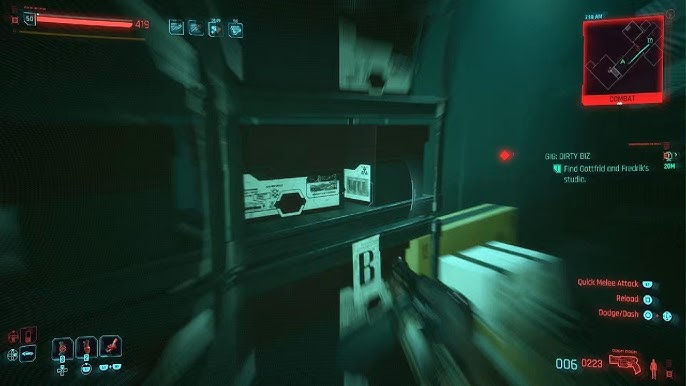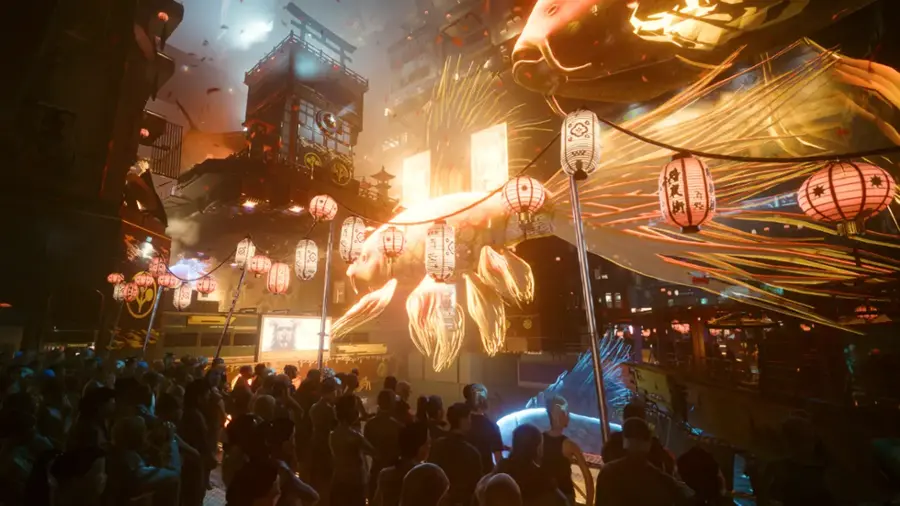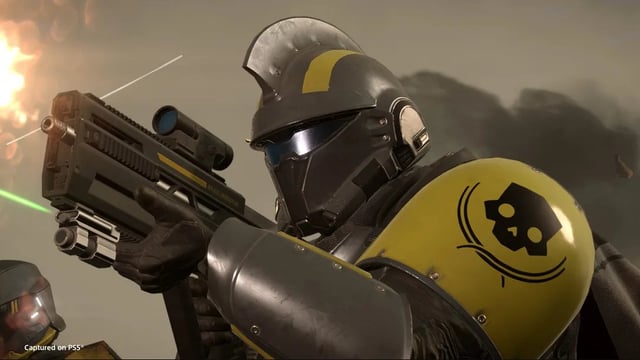Cyberpunk 2077: Phantom Liberty and 2.

Cyberpunk 2077. The name alone conjures a whirlwind of emotions, from initial hype reaching fever pitch to the disappointment that followed its rocky launch. But CD Projekt Red, known for their commitment to quality and player satisfaction, wasn't ready to let Night City fade into obscurity. Now, with the release of Phantom Liberty and the transformative 2.0 update, Cyberpunk 2077 is making a serious bid for redemption. As a PC gamer who's followed this journey closely, I'm here to dissect whether this is a triumphant return or just another coat of chrome on a flawed foundation.
Revamped Systems: A Deep Dive into Build Variety
The 2.0 update is far more than a simple patch; it's a fundamental overhaul of Cyberpunk 2077's core systems. The skill tree, a source of much frustration in the original release, has been completely redesigned. Gone are the bloated trees with incremental stat boosts. Instead, we have streamlined skill lines with meaningful perks that significantly alter gameplay. This reminds me of Deus Ex: Human Revolution's augmentations, where choosing specific upgrades genuinely changed how you approached situations. Unlike Fallout 4's somewhat diluted perk system, Cyberpunk 2077's 2.0 update offers clear paths for specialization, allowing for truly distinct builds.
 V showcases the updated cyberware system in the heat of combat, a core part of the Phantom Liberty and 2.0 update experience.
V showcases the updated cyberware system in the heat of combat, a core part of the Phantom Liberty and 2.0 update experience.
The new cyberware capacity system is equally impactful. You can no longer become an unkillable cyborg overloaded with implants. Now, every piece of cyberware counts against your capacity, forcing you to make tough choices. This adds a layer of strategic depth, compelling you to prioritize your desired playstyle. For instance, a dedicated netrunner might sacrifice some armor plating for enhanced RAM and quickhack efficiency, while a melee-focused character might invest heavily in powerful limb enhancements and a robust circulatory system. Builds that relied on simply stacking armor or crit chance are no longer viable, encouraging experimentation and tailored character creation. Previously, it was relatively easy to become a jack-of-all-trades, but now specialization is rewarded.
Phantom Liberty: Espionage, Intrigue, and Tough Choices
Phantom Liberty plunges V into the dangerous world of espionage and political maneuvering in Dogtown, a lawless district ruled by Kurt Hansen. The narrative hinges on the fates of Solomon Reed, a veteran FIA agent played with compelling gravitas by Idris Elba, and Songbird, a talented netrunner with secrets of her own. Player choices are paramount, and the consequences are far-reaching.
 Solomon Reed's grizzled appearance and weary eyes tell a story of hardship and experience, reflecting the complex choices players must make.
Solomon Reed's grizzled appearance and weary eyes tell a story of hardship and experience, reflecting the complex choices players must make.
Siding with Reed offers a more conventional, perhaps even "heroic," conclusion, though the lines of morality remain blurred. His path emphasizes loyalty and duty, even when faced with difficult compromises. Betraying Songbird, on the other hand, leads to a darker, more morally ambiguous ending that forces you to confront the true cost of survival in Night City. While both paths are compelling, the choice to side with Songbird feels more impactful, precisely because it challenges your expectations and leaves you questioning your decisions long after the credits roll. It’s a testament to the quality of writing that neither choice feels entirely "right."
Does the storytelling reach the heights of Metal Gear Solid? While it doesn't quite match the intricate web of conspiracies and philosophical musings of Kojima's masterpiece, Phantom Liberty delivers a gripping narrative with genuine emotional weight. The tension is palpable, the stakes are high, and the characters are complex and flawed. The dynamic between V, Reed, and Songbird is particularly well-developed, driving the narrative forward with a sense of urgency and intrigue.
Visual Fidelity: A Night City Transformed
The 2.0 update brings significant graphical enhancements to Night City, especially concerning lighting and reflections. The implementation of Ray Tracing: Overdrive mode takes this even further, pushing the boundaries of visual fidelity.
 The neon-drenched streets of Japantown glisten with enhanced ray-traced reflections, adding a layer of immersion.
The neon-drenched streets of Japantown glisten with enhanced ray-traced reflections, adding a layer of immersion.
The neon glow of Japantown is dramatically enhanced, with reflections shimmering realistically on the rain-slicked streets. The dilapidated buildings of Pacifica exhibit a level of detail previously unseen, with textures that truly convey the district's decay and neglect. Ray Tracing: Overdrive mode is not just a marginal improvement; it's a transformative experience that elevates the visual quality of Cyberpunk 2077 to a new level. However, be warned: it comes at a steep performance cost.
PC Performance: Can Your Rig Handle It?
Let's talk brass tacks. How does Cyberpunk 2077 perform on PC after the 2.0 update and with Phantom Liberty installed? Here are my findings at 1440p resolution:
- AMD Ryzen 5000 series CPU paired with Nvidia RTX 3070: Average framerates in demanding scenarios like Dogtown hovered around 45-55 FPS, with 1% lows dipping into the low 30s. Playable, but not ideal.
- AMD Ryzen 7000 series CPU paired with Nvidia RTX 4070: A significant improvement, pushing average framerates to 65-75 FPS with 1% lows in the mid-40s. A much smoother experience.
- AMD Ryzen 7000 series CPU paired with AMD Radeon RX 7800 XT: Performance was comparable to the RTX 4070 configuration, with similar average framerates and 1% lows.
- AMD Ryzen 5000 series CPU paired with AMD Radeon RX 6800: Similar to the RTX 3070, performance struggled in demanding areas, with average framerates around 40-50 FPS and 1% lows in the high 20s.

CPU utilization has improved considerably, suggesting that the redesigned game engine has alleviated some of the CPU bottlenecking issues that plagued the original release. However, Cyberpunk 2077 remains a demanding title, and a powerful CPU is still recommended for optimal performance.
Ray Tracing: Overdrive mode is simply not viable on mid-range hardware like the RTX 3070 or RX 6800. Even with DLSS/FSR enabled, framerates plummet to unplayable levels. To realistically enjoy this level of visual fidelity, you'll need a high-end GPU like an RTX 4080 or better.
Has Cyberpunk 2077 Finally Delivered?
 A tense conversation unfolds within the bustling Dogtown market, highlighting the gripping narrative of Phantom Liberty.
A tense conversation unfolds within the bustling Dogtown market, highlighting the gripping narrative of Phantom Liberty.
So, has Cyberpunk 2077 finally delivered on its initial promises? I believe the answer is a resounding yes. The 2.0 update and Phantom Liberty have transformed the game into the immersive RPG experience that was originally envisioned. The revamped skill tree and cyberware systems offer unparalleled build variety, while the narrative is gripping, morally complex, and genuinely impactful. The graphical enhancements are stunning, though they come at a performance cost.

Is this a redemption story for CD Projekt Red? Absolutely. They've not only fixed the game's technical issues but have also enhanced its core gameplay and narrative elements.
The Verdict: Worth Revisiting, Worth Experiencing
If you were disappointed with Cyberpunk 2077 at launch, now is the time to revisit Night City. The 2.0 update and Phantom Liberty offer a fundamentally different and vastly superior experience. And if you've never played Cyberpunk 2077 before, now is the perfect opportunity to dive in and experience one of the most ambitious and visually stunning RPGs of recent years. Just be prepared to upgrade your PC if you want to experience it at its absolute best. Welcome to Dogtown, choomba. You're in for a ride.
 A panoramic view of Dogtown, the new location introduced in Phantom Liberty, showcasing its unique and distinct visual style.
A panoramic view of Dogtown, the new location introduced in Phantom Liberty, showcasing its unique and distinct visual style.

 A captivating shot of Night City, showcasing its vibrant city design.
A captivating shot of Night City, showcasing its vibrant city design.